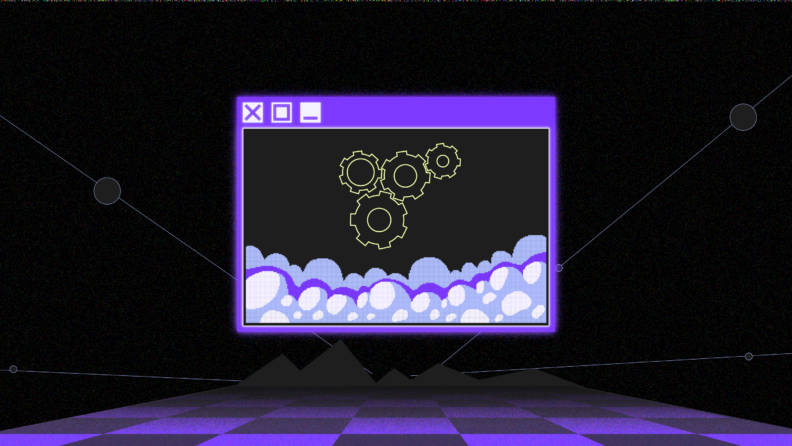A cloud service is a type of computing service that is delivered over the Internet. It allows individuals and organizations to use software and hardware that are managed by third parties at remote locations.
Cloud services are the most significant turning point in information technology since the development of the office computer. The race for bigger and faster computer terminals has given way to affordable and expanded cloud services. This is a really big deal, and you're a part of it.
Understanding Cloud Services
Cloud services are the memory and processing services you can get from leasing space on a remote server. The idea is to pay a monthly fee for storage and some pretty high-speed computing rather than investing in your own data center. Dedicated remote data centers also typically have sophisticated software you can access for a fee that provides economies of scale, multi-cloud AI, and data backup.
Types of Cloud Services
The market is mature now, so various providers have diversified into certain niche offerings. Everybody, it seems, wants something different from cloud services, so now there are three major currents: IaaS, PaaS, and SaaS.
- Infrastructure as a Service (IaaS): IaaS is on-demand access to high-horsepower computing machines. If you need a decently powerful rig and don't feel like building a SkyNet-style supermind, you can lease space on an enterprise-scale server rack with any hardware configuration you need.
- Platform as a Service (PaaS): PaaS is a ready-to-go platform for application development and custom apps you've either built for your enterprise or chosen to run as cloud-native applications. This is a complete, ready-to-use solution for cloud-hosted development and application processes.
- Software as a Service (SaaS): SaaS grants subscribers access to whatever software packages the service provider hosts. You might, for instance, be interested in automating specific HR processes, but you have no experience with it and don't want to commit too soon. Instead of making the big switch without knowing how it will go, you can opt-in on a SaaS platform and try it out. If you like how it works, stick around and (likely) save big on payroll and inefficient operations.
The Evolution of Cloud Computing
If you want to be cheeky, the origin of cloud computing was a caveman asking his friend to remember something for him, long before writing was invented.
Today, it’s a way of outsourcing memory and thinking that you don’t want to build out for yourself. This could be due to the high cost of initial hardware and software investments, lack of budget or in-house expertise to operate certain software, or wanting to test a new app without committing to more than the cost of a trial version.
Modern cloud services got off the ground in the 1950s, when distributed computer networks were first wired up to work as a single unit. This led to mainframe computing, which was developed by IBM. By the '80s, the switch had been made to the cluster model, which was built around local nodes. Clusters that are located in different centers started up in the '90s as grid computing, a kind of proto-internet.
Web 2.0 is a related technology that has cursed the world with social media. This era also introduced key concepts in distributed computing, such as Quality of Service (QoS), Service-Level Agreements (SLA), and Software as a Service (SaaS).
Moving beyond the 2010s, today's forward-thinking CTOs are exploring utility computing. This model focuses on efficiently providing services like storage and infrastructure, and is viewed as an evolutionary step towards more integrated and advanced computing systems, potentially leading to a highly interconnected network akin to a 'Borg collective' by the 2030s.
How Cloud Services Work
Modern cloud services connect users' devices, such as desktop computers, native servers, and mobile devices to remote servers via an internet connection. Those servers are located in a data center with dedicated infrastructure (i.e., server racks, power supplies, fire suppression, etc.) that would otherwise be a significant capital investment for the clients' companies.
Users' devices connect to the remote servers to outsource some of their memory and processing functions. Data travels over the network in packets that are distributed according to the needs of the ecosystem users. A firewall externally protects the network and internally by enterprise-scale antivirus and data security software.
In exchange for a relatively low fee, users can use a suite of security, monitoring, traffic routing, and management assets that might otherwise be inaccessible.
Key Technologies Behind Cloud Services
There's a lot of technology needed to run the cloud. Several key innovations are needed to make the system work, and a lot of them are critical to understanding how it all fits together.
- Virtualization – This process of parceling out the virtual environment to multiple users and activities can run on a single machine or group of machines. Using a relatively hefty bank of servers, the virtual space accepts applications and calls for service from multiple users. In this way, a single server or bank of servers can act as hosts for multiple customers whose virtual computers are referred to as guest machines.
- Containerization – Ordinarily, you'd have to install specific applications on your computer to run them. Containerization solves that problem in the cloud by bundling together all the libraries and files needed to run the app on whatever infrastructure you're using.
Think of containerization as the cloud equivalent of sending assembly instructions and a manual to build your Ikea shelves. The application you need is the table, but you also get instructions on how to build it, which can be transported with the kit to any customer’s house. Containerized data allows shared virtual environments to operate some pretty exotic custom apps without having to install new operating systems or libraries every time somebody wants to run their accounting software.

- Cloud Orchestration – As you can imagine, all this complexity needs a lot of traffic management. Cloud orchestration is the largely automated process of switching between assets and traffic priorities in the shared environment. Cloud services use AI and other automated switching systems, like a conductor at an orchestra, to coordinate and prioritize the different sections of the environment and get the best performance possible.
Advantages of Cloud Services
There's a reason why tech leaders have been migrating to the cloud. In fact, there are several reasons, and they all apply at least somewhat to nearly everyone who needs decent IT for their business.
| Advantages | |
| Scalability and Flexibility: | The cloud provides businesses with the flexibility to scale their IT resources up or down based on their current needs. This means companies can respond swiftly to market changes and customer demands without the burden of heavy investments in physical infrastructure. It's a game-changer for businesses looking to stay agile in a fast-paced market. |
| Innovation and Competitive Edge: | The cloud acts as a catalyst for innovation by providing access to cutting-edge technologies like artificial intelligence (AI), machine learning, big data analytics, and the Internet of Things (IoT). These technologies, once accessible only to large corporations with deep pockets, are now available to businesses of all sizes through the cloud. This democratization of technology levels the playing field, allowing smaller companies to compete with larger ones more effectively. By harnessing these advanced tools, businesses can gain insights into customer behavior, optimize operations, and create personalized customer experiences, all of which are critical components of maintaining a competitive edge in today's market. |
| Cost Efficiency: | With cloud services, the traditional capital expenditure on hardware and infrastructure turns into a more manageable operational expense. Businesses pay only for what they use, avoiding the sunk costs associated with underutilized resources. Additionally, cloud services offer enhanced collaboration and accessibility. Employees can access files and applications from anywhere, anytime, facilitating better teamwork and productivity. Moreover, cloud providers ensure high levels of security and data protection, often exceeding what businesses could afford to implement on their own. |
Implementing Cloud Services in Your Business
The transition to cloud computing has many benefits – not only does it streamline data management, but it also offers unparalleled scalability and flexibility, essential for businesses aiming to stay competitive in the digital era.
This modern approach to IT infrastructure allows for seamless integration of new technologies. It facilitates the management of vast data volumes, ensuring that your business is well-equipped to adapt to changing market demands.
Moreover, the decision to integrate cloud services should be accompanied by a strategic plan to manage these services effectively. A comprehensive solution for businesses seeking expert guidance and support in their cloud journey is managed cloud services. These services ensure that cloud infrastructures are optimized, secure, and aligned with your business objectives.
When looking for public cloud services, consider private cloud providers or hybrid cloud options as you grow, a special concern for startups.
Future Trends in Cloud Services
The next big thing in cloud technology is probably automation, particularly cloud-native services for AI and machine learning. The vast stores of memory and processing cloud computing services make available naturally encourage artificial intelligence, which tends to be a real bandwidth hog for the underlying infrastructure.
Maybe the most obvious place where AI is coming of age is in orchestration. The complex and rules-based switching required for smooth network traffic is tailor-made for machine learning since it's rote, mechanistic tasks that must be repeated over and over across cloud environments.
Look for thinking machines to get smarter and to work harder in an ever-expanding role here. In time, AI could make more of a splash by drafting custom apps and intelligently managing bandwidth for clients, especially in DDoS protection and smart cloud security roles. Beyond the next decade, we don't know. Probably SkyNet.
Smart Clouds Are For Smart People (Like You)
Cloud services have grown by leaps and bounds, as have the critical applications available as SaaS has grown into its own inflating industry. As you get ready to assimilate to the new reality of the cloud, remember two things: First, resistance is futile. Second, you need to know what you're doing while doing it.
There are endless cloud resources to learn more, including podcasts about cloud computing, conferences, and courses. Plus, you can subscribe to The CTO Club newsletter to stay updated on the future of cloud services.




